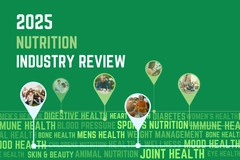
- Industry news
Industry news
- Category news
- Reports
- Key trends
- Multimedia
Multimedia
- Journal
- Events
- Suppliers
Suppliers
- Home
- Industry news
Industry news
- Category news
- Reports
- Key trends
- Multimedia
Multimedia
- Events
- Suppliers
Suppliers
The inverted U of DBM: When economics blossom so does nutrition, says study

15 Jun 2023 --- The double burden of malnutrition (DBM) – the coexistence of underweight and overweight populations in a society – is a growing global challenge, expected to decline as low and middle-income countries’ gross domestic product per capita (GDPPC) increases.
The team of international researchers found that DBM decreases with increased levels of women in the workforce, adult literacy rates, higher rates of agriculture in the national GDP and health warnings on cigarettes.
They suggest investing in and empowering people, especially women, through education to get them to enter the workforce, as that could bring down DBM numbers.
Globalization and education
The researchers used data across 188 countries spread out over 42 years. They found that developing countries are facing a double vulnerability, as they experience higher levels of DMB than previously, with fewer resources and finances to tackle the issue.
 Countries with lower shares of agriculture in their GDP had a higher rate of DBM.They found that as income increases, so does the DBM, but only until a certain threshold. “The DBM level rises with GDPPC until a particular threshold income level (about US$11,113 in 2021), and then starts declining,” reads the study.
Countries with lower shares of agriculture in their GDP had a higher rate of DBM.They found that as income increases, so does the DBM, but only until a certain threshold. “The DBM level rises with GDPPC until a particular threshold income level (about US$11,113 in 2021), and then starts declining,” reads the study.
Furthermore, the result showed that countries with lower shares of agriculture in their GDP had a higher rate of DBM, as more industrialized countries showed a higher risk of malnutrition.
Countries that are more literate and globalized also showed decreased DBM rates, as these countries usually have more policies in place. Nutrition knowledge is one factor of literacy that has increased, especially among women, and it has shown the potential to mitigate DBM.
As for globalization, the researchers argue, “while it can accentuate overweight prevalence, it can also mitigate underweight prevalence through pathways such as increased access to food and nutrition information, thereby reducing the DBM levels.”
Levels of DBM
DBM is growing among the general adult population, and a group of international researchers set out to examine the role of macroeconomics and GDPPC on the growing challenge.
Undernutrition brings health consequences such as stunting, wasting, micronutrient deficiency and being underweight. On the other side of the spectrum, there is overweight and obesity, which according to the World Obesity Federation, is expected to represent half of the world’s population by 2035 if current patterns are not changed.
The study stresses that DBM manifests at three levels from a societal incidence perspective – individual, household and populational.
At the individual level, DBM can develop multiple types over a person’s lifetime, in addition to the coexistence of two or more types of malnutrition. Secondly, various household members can be affected by different forms of malnutrition. At the individual level, DBM can develop multiple types over a person’s lifetime.
At the individual level, DBM can develop multiple types over a person’s lifetime.
Lastly, it exists at the population level, with both undernutrition and overweight or obesity prevalent in the same community, region or country.
A bigger issue
The study reads: “At individual and household levels, the DBM can be transitory as underweight household members could gain weight over time.”
“However, at the population level, the DBM is often a more persistent phenomenon as individuals recovering from one form of malnutrition are replaced by others with malnutrition.”
The authors detail that DBM accounted for 1% of China’s GDP in the early 2000s and could now look at 9% due to healthcare costs, educational outcomes and productivity losses.
To conclude, the scientists point out that they have focused on being underweight and overweight in this study but that the DBM goes further than that, especially for micronutrient deficiencies.
In a recent UK study, researchers found that hidden hunger – nutrient and mineral deficiency of either zinc, iron, folate or vitamin A – affects two-thirds of women of reproductive age and half of the preschool-aged children globally.
By Beatrice Wihlander











